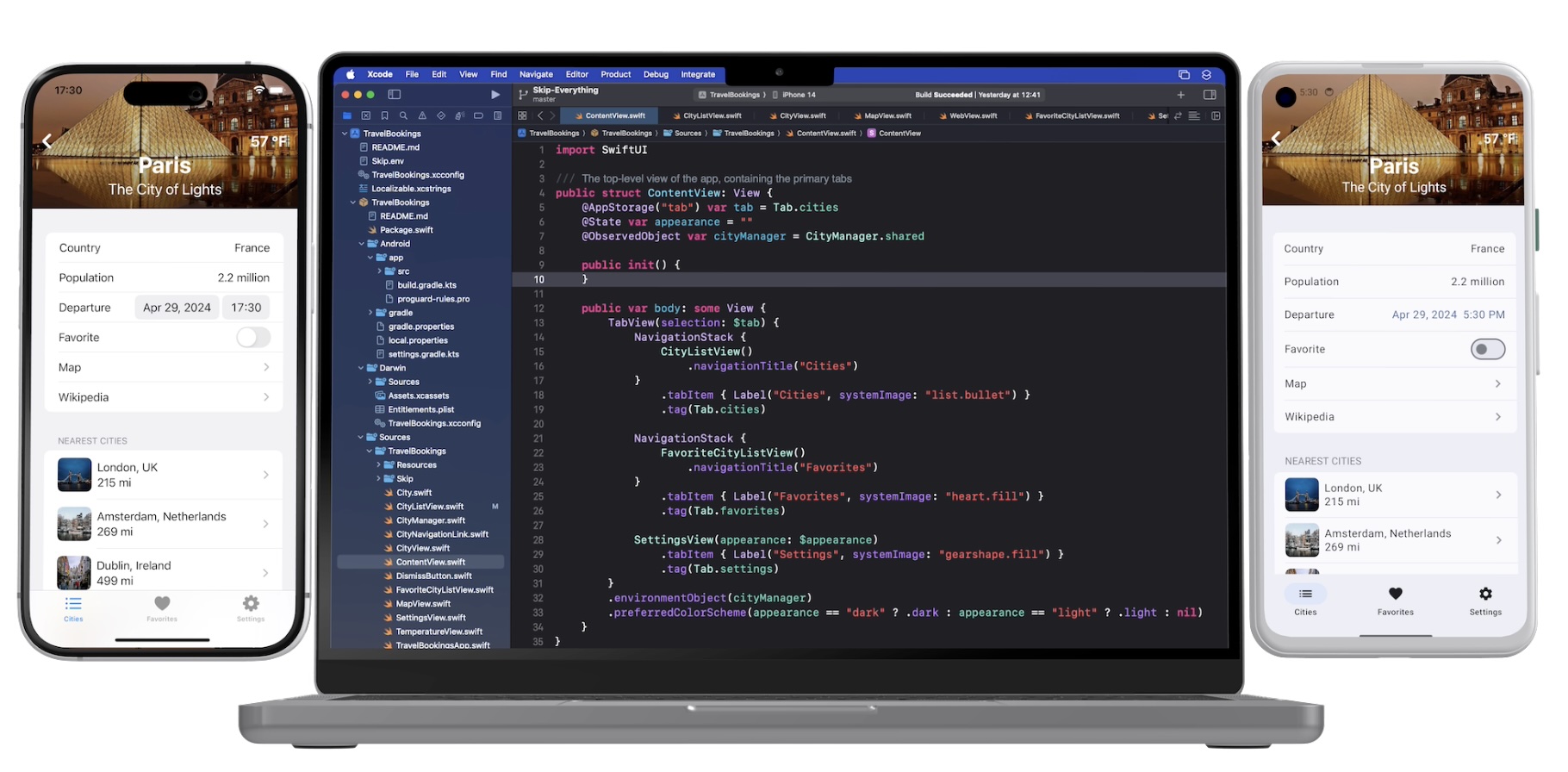Skip Fuse is now free for Indie Developers!
Since the launch of the official Swift SDK for Android on swift.org last month, we have been overwhelmed by a surge of interest in building cross-platform apps using a single shared SwiftUI codebase. Skip’s earlier “Lite” mode, whereby your Swift code is transpiled into Kotlin, has been free for Indie developers for over a year, but since the launch of Skip’s “Fuse” mode — which is based on the native Swift SDK for Android — it has required a paid commercial license.
Today we are happy to announce that Skip Fuse is now free for Indie developers as well! As of Skip 1.6.28, you are not limited to using Skip Lite, provided you qualify for the Indie developer program (see the pricing page for details).
Skip’s approach isn’t just about reusing application logic; it’s about sharing the entire application stack—from business logic to the UI—using the same modern, safe, and performant Swift code. While Skip’s original “Lite” mode uses transpilation (converting Swift code to Kotlin/Java), the recent excitement is around Skip’s Fuse mode. This mode doesn’t translate your code; it compiles it natively for Android. This has the benefits of:
- Truly Native Performance: By compiling Swift directly to native ARM code for Android, you bypass the overhead of a JavaScript bridge (like in React Native) or a custom rendering engine (like in Flutter, which uses its own Dart runtime). Your Swift code runs as a native Android binary, and it is only the interfacing with Android Kotlin/Java libraries that requires bridging through to the Android Runtime.
- Embracing the UI Toolkit: Crucially, Skip allows you to write your UI in SwiftUI for the iOS side, and it generates the equivalent Jetpack Compose UI for the Android side. This is a huge win because it means:
- Native Look and Feel: Your users get the platform-native UI experience they expect, rather than a mimicked or custom-rendered one.
- Use of Vendor-Recommended Toolkits: You’re leveraging the official, modern UI frameworks recommended by both Apple and Google, ensuring you benefit from future platform updates and features.
And it bears reminding that on the iOS side, Skip does nothing. You are using the Apple frameworks, like SwiftUI, directly. This means that there is no overhead at all for the iPhone app when using Skip.
Now that Android is an officially supported platform for the Swift language, there’s no better time than now to jump in and start building dual-platform apps with Skip!
